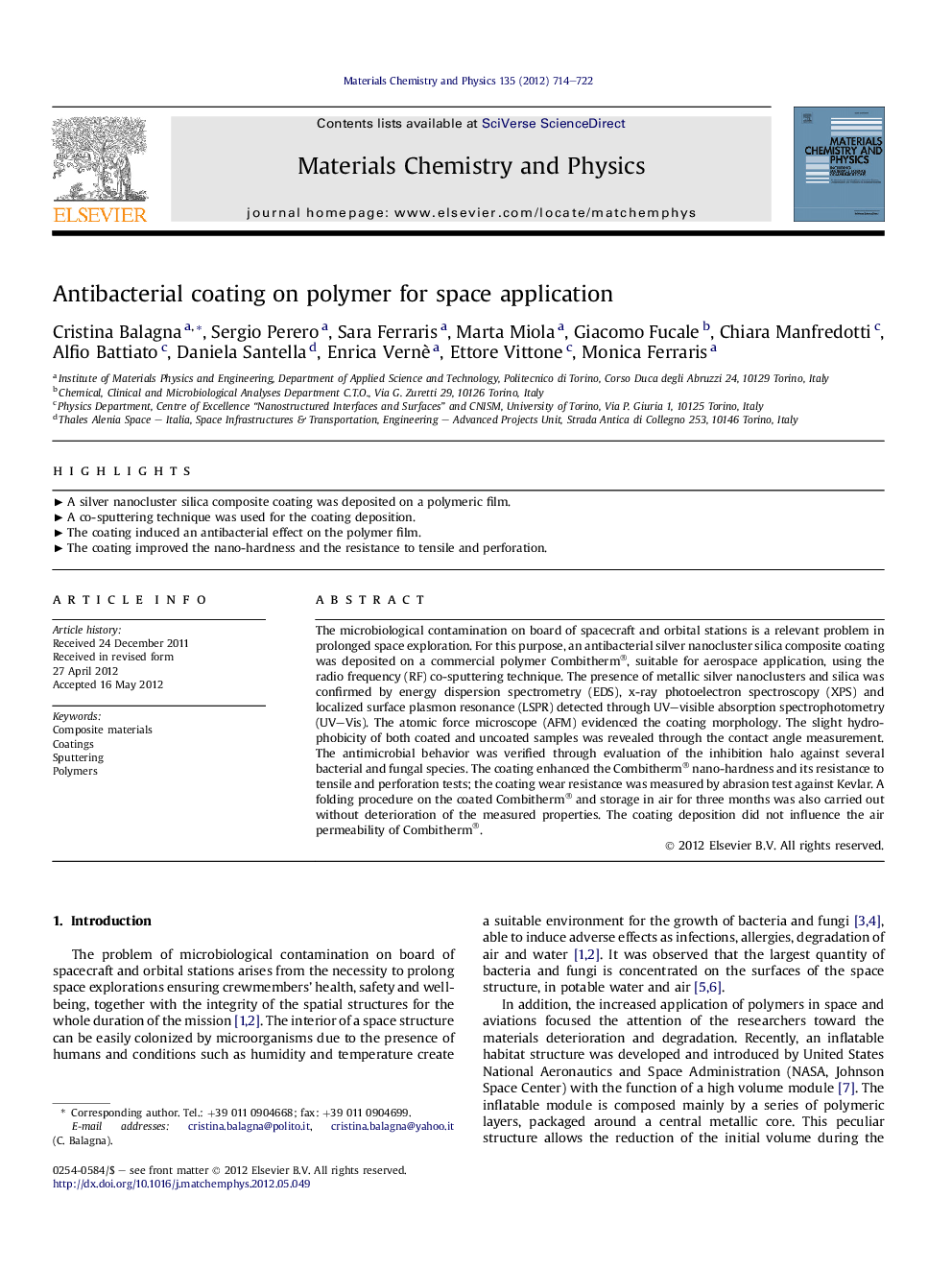| Article ID | Journal | Published Year | Pages | File Type |
|---|---|---|---|---|
| 1523125 | Materials Chemistry and Physics | 2012 | 9 Pages |
The microbiological contamination on board of spacecraft and orbital stations is a relevant problem in prolonged space exploration. For this purpose, an antibacterial silver nanocluster silica composite coating was deposited on a commercial polymer Combitherm®, suitable for aerospace application, using the radio frequency (RF) co-sputtering technique. The presence of metallic silver nanoclusters and silica was confirmed by energy dispersion spectrometry (EDS), x-ray photoelectron spectroscopy (XPS) and localized surface plasmon resonance (LSPR) detected through UV–visible absorption spectrophotometry (UV–Vis). The atomic force microscope (AFM) evidenced the coating morphology. The slight hydrophobicity of both coated and uncoated samples was revealed through the contact angle measurement. The antimicrobial behavior was verified through evaluation of the inhibition halo against several bacterial and fungal species. The coating enhanced the Combitherm® nano-hardness and its resistance to tensile and perforation tests; the coating wear resistance was measured by abrasion test against Kevlar. A folding procedure on the coated Combitherm® and storage in air for three months was also carried out without deterioration of the measured properties. The coating deposition did not influence the air permeability of Combitherm®.
► A silver nanocluster silica composite coating was deposited on a polymeric film. ► A co-sputtering technique was used for the coating deposition. ► The coating induced an antibacterial effect on the polymer film. ► The coating improved the nano-hardness and the resistance to tensile and perforation.
